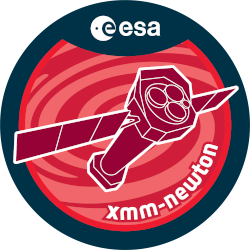

| Proposal ID | 011115 |
| Title | X-ray spectroscopic study of supersoft sources SSC_21 |
| Download Data Associated to the proposal | https://nxsa.esac.esa.int/nxsa-sl/servlet/data-action-aio?obsno=0111150101 |
| DOI | https://doi.org/10.5270/esa-78hhnpa |
| Principal Investigator, PI | Dr Michael Watson |
| Abstract | GT- Luminous supersoft X-ray sources are characterized by soft spectra and highbolometric luminosities of the order of 10^37 erg/s. We propose to observe oneof the brightest of the more than 30 known sources. EPIC and/or RGS X-rayspectra will allow us to derive essential information on the origin of theX-ray emission and thus to distinguish between white dwarf (WD) and neutronstar models. In the case of a WD origin, the modelling of the spectra willprovide measures of the temperature, gravity and abundances which in turnallows to estimate mass accretion rates, WD masses and possibly information onits C+O or O+Ne+Mg composition. This will enable us to test the most popularversion of the WD models, namely the close-binary supersoft source model. |
| Publications |
|
| Instrument | EMOS1, EMOS2, EPN, OM, RGS1, RGS2 |
| Temporal Coverage | 2000-12-16T11:06:35Z/2000-12-19T05:08:08Z |
| Version | PPS_NOT_AVAILABLE |
| Mission Description | The European Space Agencys (ESA) X-ray Multi-Mirror Mission (XMM-Newton) was launched by an Ariane 504 on December 10th 1999. XMM-Newton is ESAs second cornerstone of the Horizon 2000 Science Programme. It carries 3 high throughput X-ray telescopes with an unprecedented effective area, and an optical monitor, the first flown on a X-ray observatory. The large collecting area and ability to make long uninterrupted exposures provide highly sensitive observations. Since Earths atmosphere blocks out all X-rays, only a telescope in space can detect and study celestial X-ray sources. The XMM-Newton mission is helping scientists to solve a number of cosmic mysteries, ranging from the enigmatic black holes to the origins of the Universe itself. Observing time on XMM-Newton is being made available to the scientific community, applying for observational periods on a competitive basis. |
| Creator Contact | https://www.cosmos.esa.int/web/xmm-newton/xmm-newton-helpdesk |
| Date Published | 2002-03-29T00:00:00Z |
| Last Update | 2025-08-04 |
| Keywords | "mass accretion rates", "white dwarf wd", "wd models", "popular version", "mg composition", "soft spectra", "bolometric luminosities", "x ray spectroscopic", "neutron star models", "EPIC", "supersoft sources ssc_21", "rgs xray spectra", "wd masses", "xray emission", "wd origin" |
| Publisher And Registrant | European Space Agency |
| Credit Guidelines | European Space Agency, Dr Michael Watson, 2002, 'X-ray spectroscopic study of supersoft sources SSC_21', PPS_NOT_AVAILABLE, European Space Agency, https://doi.org/10.5270/esa-78hhnpa |